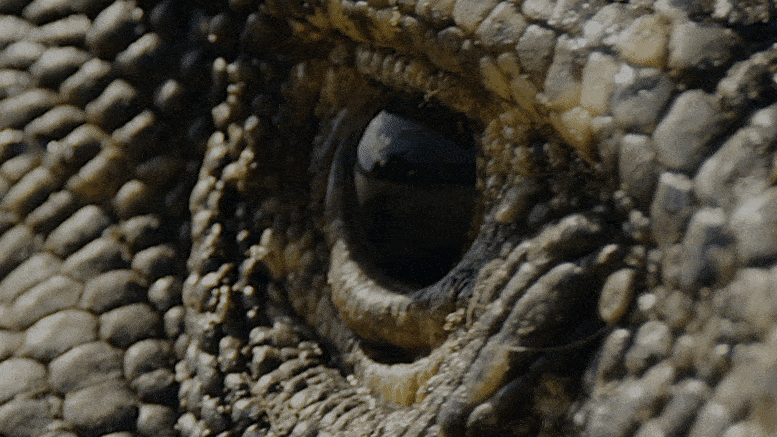

Eine neue Studie zeigt, dass die Fähigkeit, dem Blick einer Person zu einem zunächst versperrten Ort zu folgen, was als visuelle Perspektivenübernahme bekannt ist, wahrscheinlich auf die Abstammungslinie der Dinosaurier zurückgeht, etwa 60 Millionen Jahre bevor sie bei Säugetieren auftauchte. Diese kognitive Fähigkeit wurde bei einigen Vogelarten gefunden und legt nahe, dass Vogeldinosaurier oder Vögel über eine bemerkenswerte Neurokognition verfügten, die älter war als die Entstehung ähnlicher Fähigkeiten bei Säugetieren.
Forscher der Universität Lund fanden heraus, dass die visuelle Perspektivenübernahme, die kognitive Fähigkeit, einem blockierten Blick zu folgen, etwa 60 Millionen Jahre vor ihrem Auftreten bei Säugetieren in der Dinosaurierlinie entstand. Der Befund stellt die Annahme in Frage, dass sich komplexe Kognitionen hauptsächlich bei Säugetieren entwickelt haben, und wirft Licht auf die kognitiven Fähigkeiten von Vögeln und ihren Dinosaurier-Vorfahren.
Wenn jemand in Ihrer Nähe seinen Kopf auf etwas in der Umgebung richtet, können Sie wahrscheinlich nicht anders, als zu verfolgen, wohin sein Blick gerichtet ist. Diese Reaktion wurde bei Säugetieren, Vögeln und sogar Reptilien beobachtet. Dies ist eine effektive Möglichkeit, Informationen darüber zu sammeln, was Ihrem Kollegen aufgefallen ist und Ihnen möglicherweise entgangen ist. Ein fortgeschritteneres Verhalten besteht jedoch darin, dem Blick einer Person auf einen Ort zu folgen, der Ihnen zunächst verborgen bleibt. Indem Sie sich neu positionieren, um zu sehen, was die andere Person sieht, zeigen Sie Verständnis dafür, dass die andere eine andere Perspektive hat. Diese als visuelle Perspektivenübernahme bezeichnete Fähigkeit entwickelt sich bei Kindern im Alter zwischen eineinhalb und zwei Jahren und dient als Grundlage für das spätere Verständnis der referenziellen Kommunikation und der Tatsache, dass andere Menschen einen anderen Geist haben als man selbst.
Visuelle Perspektivenübernahme kommt bisher nur bei sehr wenigen vor[{“ attribute=““>species. Mainly in apes and some monkeys, but also in dogs and crow birds. However, there is limited knowledge regarding the evolutionary origins of this crucial social skill. A team of researchers from Lund University aimed to investigate a potential early emergence of visual perspective taking in dinosaurs. Through a comparison of alligators with the most primitive existing birds, known as palaeognaths, they discovered that visual perspective taking originated in the dinosaur lineage likely 60 million years, or more, prior to its appearance in mammals.

Figure 1. Experimental setups of the study. Panels depict experiment setups (from left to right) for alligators, small birds (red junglefowl and elegant-crested tinamous), and large birds (emus and rheas). (A) Setups for experiment 1 (gazing up). (B) Setups for experiment 2 (gazing to the side). (C) Setups for experiment 3 (geometrical). Red dots depict stimuli used to lure demonstrators’ gazes (for more information about stimuli, see Materials and Methods). Credit: Science Advances, DOI: 10.1126/sciadv.adf0405
Crocodilians are the closest living relatives to birds. Their neuroanatomy has remained largely unchanged for hundreds of millions of years, and is similar to that of the common ancestor of dinosaurs and crocodilians. Palaeognath birds comprise the ostrich birds, such as emus and rheas, but also the flighted tinamous. Their brains are in large parts comparable to their forebearers, the non- avian paravian dinosaurs, which feature such celebrities as the velociraptors. Comparing these two groups of animals creates a bracket around the extinct lineage of dinosaurs leading up to modern birds.
The study revealed that alligators do not demonstrate visual perspective taking, although they do follow gaze to a visible location. In contrast, all tested bird species exhibited visual perspective taking. Additionally, the birds engaged in a behavior called “checking back,” where the observer looks back into the eyes of the gazer, and re-tracks the gaze, when unable to find anything in the direction of their gaze the first time. This behavior indicates an expectation that the gaze is referring to a target in the environment. Previously, this has only been observed in humans, apes and monkeys, and ravens.
Palaeognath birds emerged 110 million years ago, predating the two mammal groups endowed with visual perspective taking – primates and dogs – with 60 million years. Considering the neuroanatomical similarities between these birds and their non-avian forebearers, it is plausible that the skill originated even earlier in the dinosaur lineage. However, it is less likely to have been present among the earliest dinosaurs, which had more alligator-like brains. Maybe future research will show the ability to be more widespread among mammals than currently known, but even if that would be the case it will most probably still be predated by the dinosaur origin. Nevertheless, it is not surprising that visual perspective taking emerged earlier in the dinosaurs, which include the birds, given their superior vision compared to most mammals, that historically relied on nocturnal adaptations. It was only with the emergence of the primates and certain carnivores that our visual capabilities improved.
This is yet another finding that calls into question the prevailing view that mammals drove the evolution of complex cognition, and that they are the cognitive yardstick to which other animals should be compared. An increasing number of studies show the remarkable neurocognition of the avian dinosaurs, the birds, which might prompt a rethinking of the natural history of cognition.
Comments from the authors:
Senior author, prof. Mathias Osvath:
“Early in my career, crow birds earned the nickname “feathered apes,” due to numerous research findings that showcased their remarkable cognition. However, I’m beginning to question whether it would be more fitting to consider primates as honorary birds.”
First author (then PhD-student), Dr. Claudia Zeiträg:
“Birds are commonly being overlooked when it comes to their cognitive skills. Our findings show that they do not only have several cognitive skills on par with those of apes, but that their forebearers most likely had these skills long before they evolved in mammals.”
Middle author, Dr. Stephan Reber:
“Crocodilians are ideal models to study the evolutionary origins of cognitive capacities in birds. What they share most probably existed in the common ancestor of dinosaurs and crocodilians. If crocodilians lack an ability birds possess, it likely evolved in the dinosaur lineage after the split. This approach allows us to study the cognition of extinct species.”
Reference: “Gaze following in Archosauria—Alligators and palaeognath birds suggest dinosaur origin of visual perspective taking” by Claudia Zeiträg, Stephan A. Reber and Mathias Osvath, 19 May 2023, Science Advances.
DOI: 10.1126/sciadv.adf0405

„Zertifizierter Unruhestifter. Freundlicher Forscher. Web-Freak. Allgemeiner Bierexperte. Freiberuflicher Student.“





More Stories
Die Federal Aviation Administration fordert eine Untersuchung des Misserfolgs bei der Landung der Falcon-9-Rakete von SpaceX
Identische Dinosaurier-Fußabdrücke auf zwei Kontinenten entdeckt
SpaceX startet 21 Starlink-Satelliten mit einer Falcon 9-Rakete von Cape Canaveral aus – SpaceflightNow